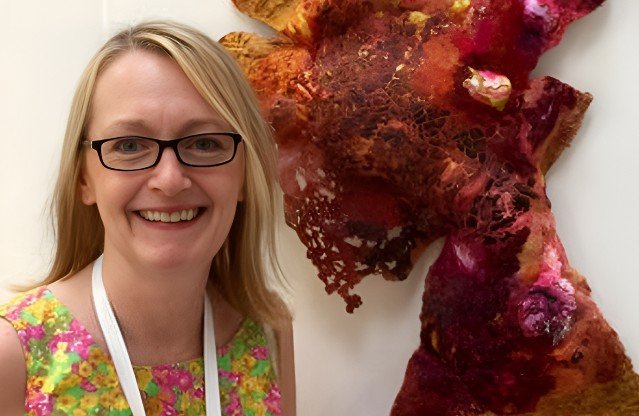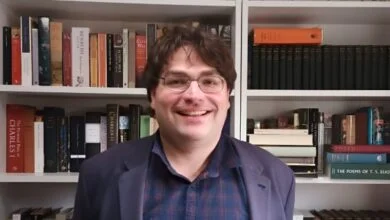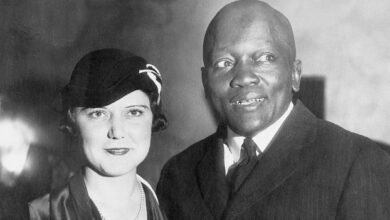Susan Hotchkis: Exploring the Textured World of Contemporary Fibre Art

Susan Hotchkis is a distinguished British textile artist whose work epitomises the beauty of texture, the poetry of decay, and the quiet power of natural imperfection. Working from her studio in Scotland, Hotchkis has carved a unique space in the realm of contemporary fibre art. Her creations, marked by subtle hues, intricate surface details and an almost sculptural depth, invite viewers to look beyond the ordinary and to contemplate the passing of time.
Early Life and Education
Susan Hotchkis’s journey into the world of textiles began with an innate fascination for materials and surfaces. From a young age she was captivated by how fabrics could tell a story—whether through their wear, their colour variations or the textures that emerge as they age. Pursuing this passion formally, she studied embroidery and later completed a Master’s degree in Textiles at Manchester Metropolitan University. These academic foundations provided both technical proficiency and conceptual depth, shaping her ability to manipulate fabric in ways that transcend traditional craft.
During her years in academia and her early teaching roles, Hotchkis refined not only her technical skills but also her critical understanding of art as a means of communication. Her exposure to a variety of textile traditions and contemporary practices enabled her to develop a voice that is both authentic and innovative.
Artistic Philosophy: Wabi-Sabi and the Beauty of Imperfection
At the heart of Susan Hotchkis’s practice lies an appreciation of the Japanese aesthetic of Wabi-Sabi—finding beauty in impermanence and imperfection. Rather than striving for polished perfection, she celebrates the marks of time: rust, erosion, weathering and decay. Each piece she creates reflects a quiet meditation on how natural forces shape and transform the environment.
This philosophy drives her choice of materials and processes. Hotchkis often burns, rips, stains and distresses fabrics to emulate the slow transformation found in the natural world. Through these actions, she captures the essence of surfaces weathered by sun, wind and rain, and invites the viewer to see the extraordinary in the seemingly mundane.
Materials and Techniques
Susan Hotchkis employs a range of fibres, papers and mixed media, but it is her mastery of textile manipulation that defines her work. Layers of fabric are dyed, stitched and distressed to achieve complex textures and tonal depth. By combining techniques such as free-machine embroidery, hand-stitching and surface printing, she achieves a tactile richness that encourages close inspection.
Her works are not merely flat compositions; many take on sculptural qualities. Relief surfaces, frayed edges and three-dimensional structures create a sense of depth and shadow, making each piece a dynamic encounter rather than a static display. The interplay of light and texture enhances the sense of time-worn mystery inherent in her art.
Influences and Inspirations
Hotchkis draws inspiration from the natural environment—weathered walls, corroded metals, peeling paint and the subtle shifts of colour found in landscapes after years of change. Urban decay and rural erosion alike provide a visual language that she translates into textile form. The textures of old industrial sites, the quiet poetry of abandoned buildings, and the delicate patterns of lichen on stone become sources of endless fascination.
Travel has also played a significant role in shaping her artistic vision. Whether exploring coastal areas or historic urban centres, she collects visual memories and photographs of surfaces that tell stories of time and transformation. These impressions form the starting point for her creative process.
Notable Works and Exhibitions
Over the years, Susan Hotchkis has exhibited her work both in the United Kingdom and internationally. Her solo and group exhibitions have highlighted her ability to transform humble materials into profound artistic statements. One notable exhibition, Alchemy, showcased her ability to merge traditional textile techniques with contemporary conceptual approaches, creating pieces that resonate with viewers on an emotional level.
Her works are often described as “fragments”—pieces that feel like remnants of a larger narrative, inviting the audience to imagine their origin. These fragments reflect not just physical decay but also the passage of human experience, offering an introspective journey through memory and time.
Contribution to Contemporary Textile Art
Susan Hotchkis stands as a leading figure in contemporary fibre art, influencing both peers and emerging artists. By pushing the boundaries of embroidery and textile manipulation, she has helped elevate textile art from a craft tradition to a recognised fine art practice. Her work demonstrates that textiles can convey powerful conceptual messages and evoke complex emotional responses.
She has also contributed to the education and mentorship of younger artists. Her years as a lecturer in art and textiles provided opportunities to inspire a new generation of creators, encouraging them to explore the expressive potential of fabric and thread.
Critical Reception
Art critics and collectors alike have praised Hotchkis for her ability to capture the essence of natural processes. Reviews often highlight the sensory quality of her work—pieces that invite touch and evoke memory through their layered textures. Her art has been described as contemplative, immersive and quietly profound, drawing viewers into a dialogue about impermanence and the beauty found in transience.
The Timeless Appeal of Her Art
What makes Susan Hotchkis’s work so compelling is its universality. The themes of decay, renewal and the passage of time resonate across cultures and generations. In an age dominated by rapid technological change and disposable culture, her art offers a counterpoint: a reminder to pause, observe and appreciate the slow and inevitable transformations that shape our world.
Her commitment to the Wabi-Sabi aesthetic encourages us to find value in the overlooked—the rusted door, the weathered wall, the peeling paint. By capturing these fleeting moments in fabric, she creates a permanent record of impermanence itself.
Future Directions
As she continues to evolve as an artist, Susan Hotchkis shows no signs of slowing her exploration of texture and time. The future may bring new materials and methods, but her core philosophy is likely to remain: to honour the beauty of natural processes and to invite us to look more closely at the world around us.
Collectors and art enthusiasts will undoubtedly continue to follow her work with keen interest, eager to see how she expands her practice while remaining true to her unique artistic vision.
Conclusion
Susan Hotchkis is more than a textile artist; she is a storyteller of surfaces, a poet of texture, and a chronicler of time’s gentle yet relentless impact. Through her innovative use of fibre and her profound appreciation for impermanence, she has established herself as a vital voice in contemporary art. Her work not only celebrates the visual beauty of decay and weathering but also invites reflection on our own relationship with time, memory and transformation. For anyone seeking to understand the power of textiles as a medium of fine art, the work of Susan Hotchkis stands as an inspiring and unforgettable example.



